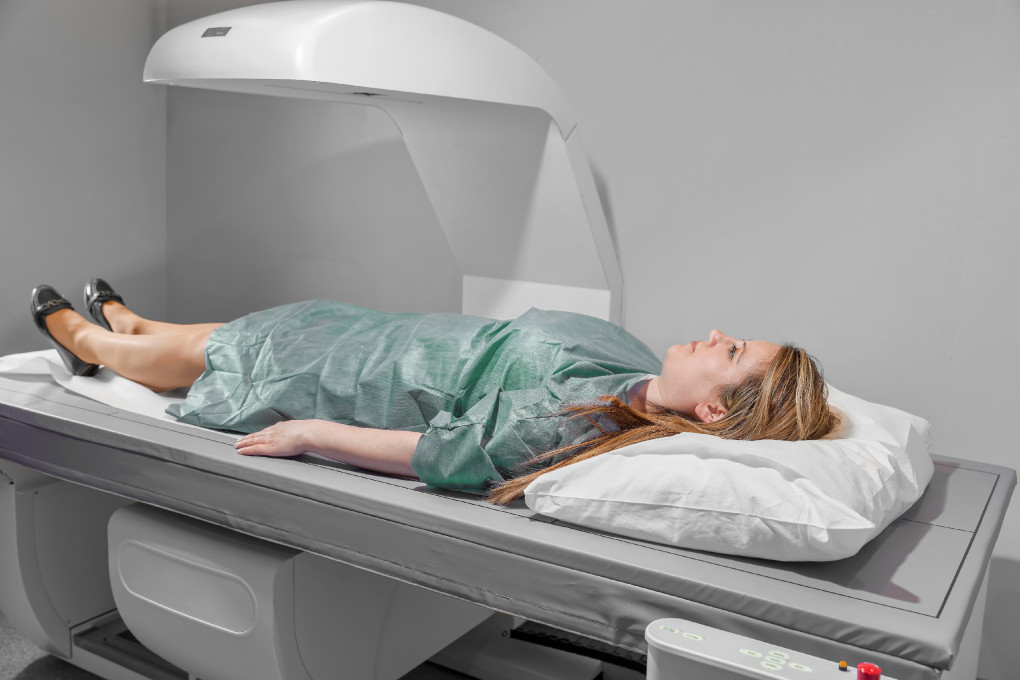A bone density scan is an imaging test which uses minimal radiation to measure the calcium content of the bone.
Update: Information regarding cyber incident. (December 2025)
A bone density scan (DEXA scan) is an imaging test using minimal radiation to measure the calcium content of the bone. This value is used to determine bone strength.

How does it work and why is it done?
Bone density scanning, also called dualenergy X-ray absorptiometry (DEXA), or bone densitometry, is an enhanced form of X-ray technology used to assess bone loss, or osteoporosis. It employs a DEXA scanner, uses minimal radiation dose and produces a report giving readings of bone density in relation to the average for a person of your size and weight.
Osteoporosis is reduced calcium content of bone, which may result in an increased risk of fracture. It affects both men and women and for some women this may be rapid and severe. The consequences of osteoporosis include pain, disability and deformity. Loss of bone strength may progress to a broken bone.
What are the risk factors?
Where can I get a bone densitometry done?
Bone Density scans (DEXA) are not performed by Canopy Imaging in Auckland. However, Auckland Bone Density Service uses our facilities. You will need to book your appointment directly with them.
Outside of Auckland Canopy Imaging in Hastings can provide DEXA scans.
Please select your location belowon the right to contact us